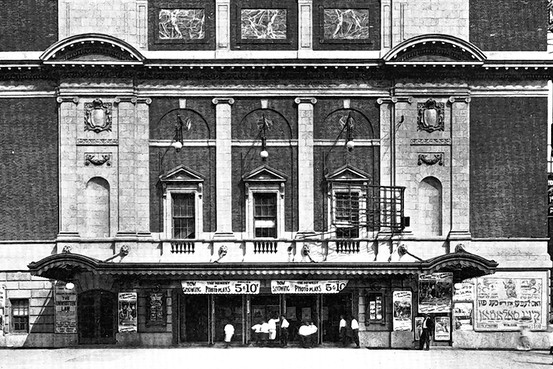Uptown Theaters Followed a Spiritual Path

They watch over the city like benevolent patriarchs. Where Egypt has its Sphinxes, Harlem has its theaters. Considering that the modern drama originated in the medieval church, and that nearly every star who ever headlined the Apollo Theater got his start singing in church, it’s appropriate that many of the great theaters of uptown have been preserved as houses of worship. New Yorkers owe these religious organizations a debt of gratitude—without them, these beautiful structures would surely have been demolished to make room for parking lots or high-rises.
The Regent has been described as “the first American movie palace.” Early on, “the flickers” were often regarded as tawdry, low-class entertainments for illiterate immigrants. Henry N. Marvin, founder of Biograph studios, had the idea to make movies respectable by constructing, in 1913, a luxurious house equipped with a live orchestra, ushers in smart uniforms, and playbills.
Initially it seemed that Marvin had over-reached; he’d built a theater, but nobody came. It wasn’t until he recruited a savvy Minnesotan named Samuel “Roxy” Rothafel to whip the place into shape that the Regent became a hit. It was the start of a 50-plus year run for one of the most enduring theaters in Harlem, and Rothafel established himself as one of New York’s foremost impresarios. He would be the force behind two of the major theaters in Midtown: the Roxy and Radio City Music Hall, where his name helped inspire the Rockettes.
The 1,854-seat Regent, meanwhile, was taken over by RKO in 1932 and became that theater chain’s most important uptown venue—long before Seventh Avenue became Adam Clayton Powell Boulevard. It closed as a movie house in 1963; some renovation work was done in 2004 (subsidized by the Upper Manhattan Historic Preservation Fund), but a full restoration is still needed.

Continue reading
http://online.wsj.com/article/SB10001424052702304314404576410061834195044.html?mod=googlenews_wsj